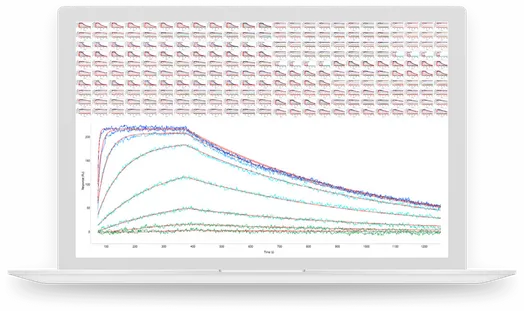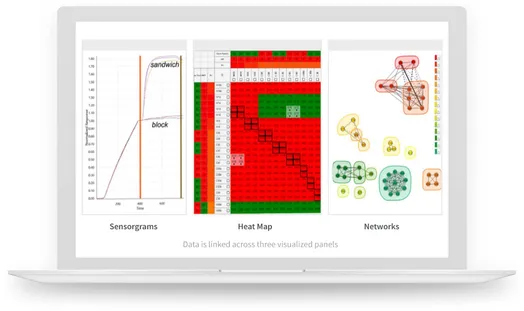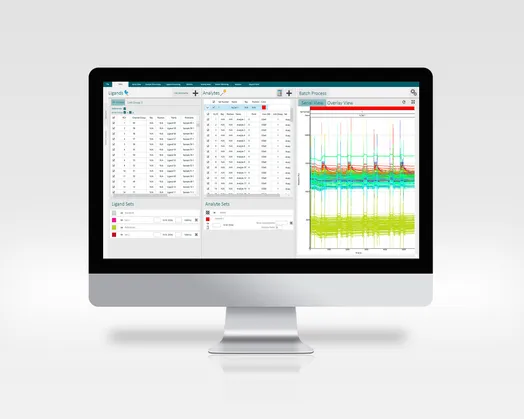Visualizing Large Volumes of Experimental Data
The client approached us with a clear need: a desktop application capable of processing and visualizing large volumes of experimental data generated by high-throughput surface plasmon resonance (SPR) instruments. The software had to be fast, accurate, and intuitive for scientists working in antibody research.
From the outset, we knew this would require a combination of deep technical expertise, performance optimization, and close collaboration with domain experts.
Technology Stack Selection
We chose .NET for its robustness and scalability, and WPF (Windows Presentation Foundation) for its powerful UI capabilities and support for hardware-accelerated rendering. This combination allowed us to build a responsive, visually rich desktop application tailored to scientific workflows.
Data Architecture & Performance
Handling massive datasets was a core requirement. We designed a custom data pipeline that:
- Efficiently ingests and parses raw SPR data.
- Minimizes memory footprint through streaming and lazy evaluation.
- Supports real-time updates and interaction without UI lag.
We implemented multithreading and asynchronous processing to ensure the application remained responsive under heavy computational loads.
Visualization Engine
To help scientists interpret complex antibody interactions, we built a visualization engine that renders:
- Network graphs of epitope relationships.
- Heatmaps and dendrograms for clustering analysis.
- Interactive charts with zoom, filter, and export capabilities.
All visualizations were GPU-accelerated using WPF’s DirectX integration, ensuring smooth performance even with thousands of data points.
Algorithm Design
We collaborated closely with the client’s scientific team to implement custom mathematical models for:
- Pairwise antibody interaction analysis.
- Epitope binning logic and clustering.
- Statistical validation and scoring.
These algorithms were optimized for both accuracy and speed, enabling real-time feedback during experimental workflows.
Agile Collaboration
Throughout the project, we maintained an agile development cycle with:
- Weekly sprint reviews and demos.
- Continuous integration and automated testing.
- Rapid iteration based on user feedback.
This approach ensured alignment with the client’s evolving needs and accelerated time-to-value.




